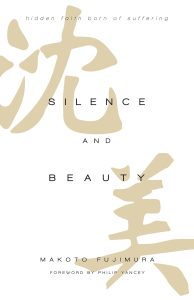 Summary: Thoughts on faith, art, Japan and the novel Silence.
Summary: Thoughts on faith, art, Japan and the novel Silence.
Despite the movie Silence bombing at the box office (I didn’t have a chance to see it before it was gone), critics have mostly given positive reviews. And that seems to be similar to what I have heard from people that seen the movie. There were many that have previously read the book and have looked forward to the movie for years. But more than a few did not like the movie or the basic theme of the book. Bishop Barron, who regularly reviews movies as part of his video podcast and who I have usually found very sympathetic to attempts to portray faith in popular culture media really did not like it.
But I can’t help but feel like there is something missing in between those that have been raving about it and those that suggest it is missing between those that really like the film and those that are suggesting it is only marginally Christian theologically.
There is a pretty good discussion between Fujimura, Martin Scorsese and Kutter Callaway at Fuller Seminary. When I hear Scorsese talk about his intent behind the film or Fujimura’s discussion in Beauty and Silence or his many other places, it seems to be exactly the type of art that Christians need to be making. It has hard questions, no particularly easy or pat answers and it is technically superb.
But that is what makes good Christian art so hard. Many people do not like hard questions or vague conclusions. And it is what make so much Christian art veer into propaganda, because overly simple answers often don’t actually deal with the real issues.
I re-read Beauty and Silence very slowly. It took me nearly two months to finish it. I was trying to finish it in time to go see Silence in the theater. But I was out of town the week it came out and then it was almost impossible to find just one week later.
Fujimura is not writing a standard book on Christian art or a standard exposition of a text. This is as much theory of missiology as it is, exploration of a particular piece of art. It is also about the history of Japan and Fuimura’s own faith journey. It is such a hard book to categorize that I am sure it, like Silence is not going to get the attention that I think it deserves.
But if you are interested in nuanced looks at Christian art, missiology, persecution, and faith I can’t think of a better book to read. On my first read, I thought Silence and Beauty was the best book I read in 2016. On my second reading I liked it just as much. It is a rich book.
Silence and Beauty: Hidden Faith Born of Suffering by Makoto Fujimura Purchase Links: Hardcover, Kindle Edition, Audible.com Audiobook




I struck by Shusaku Endo’s Silence years ago. Indeed, Fujimura’s book is rich in Japanese history and literature. It is full of questions and possible answers about the persecution of Christianity in Japan, which lead to 250 years of isolation from the world. and the aggression towards Asian countries, which lead to the bombing of Hiroshima and Nagasaki. Fujimura’s words have meaning for other individuals and cultures, “To make our way forward is to go back in history. To recover past trauma is to awaken to the pain, and we cannot heal until we see the narratives of the past renewed by faith and hope.”